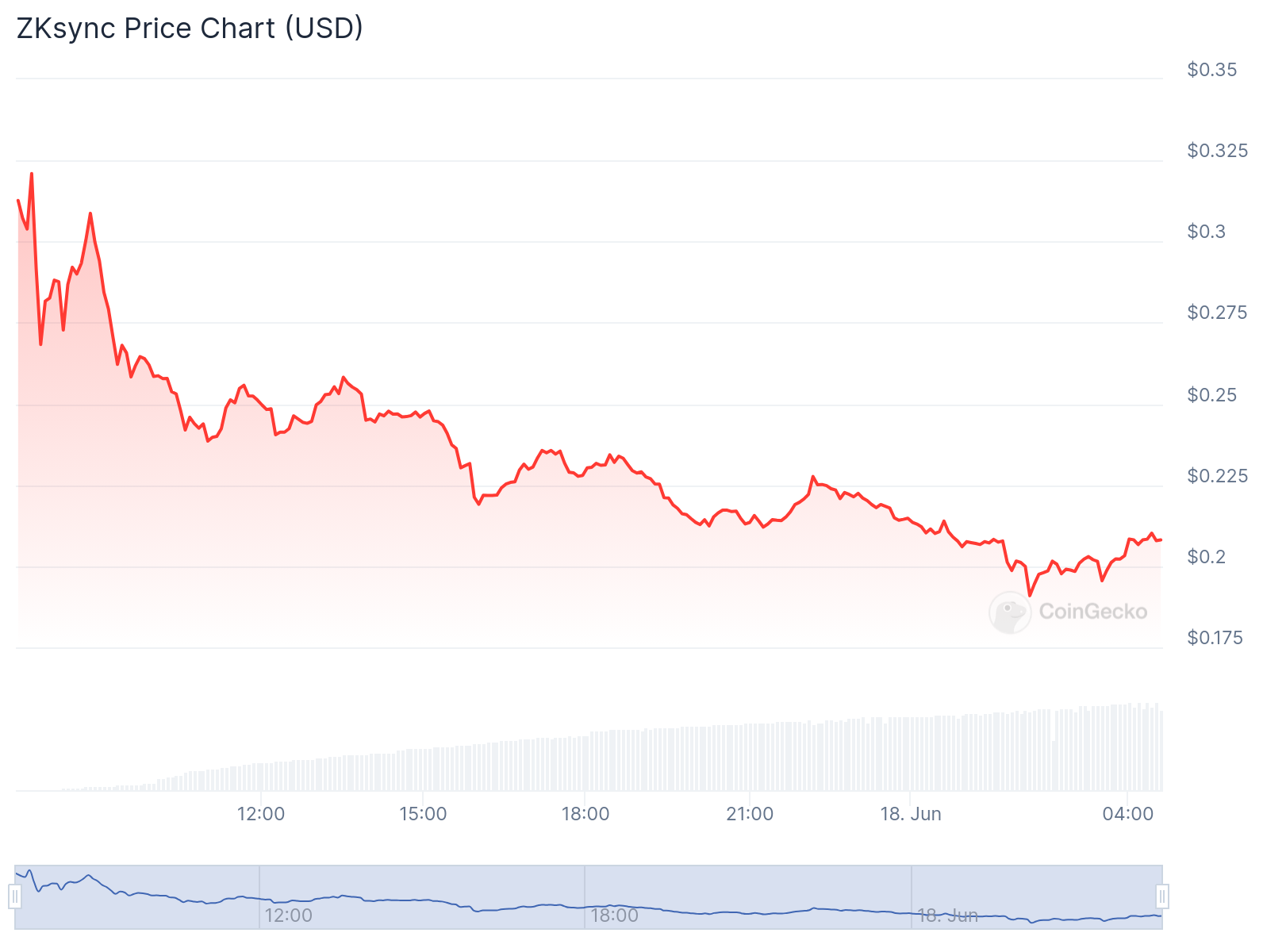Nearly half of the major wallets that received the new zkSync (ZK) token on Monday were sold.

Nearly half of the major wallets that received the new zkSync token (ZK) on Monday have already sold their entire allocation during the airdrop, contributing to a 34.5% drop in ZK price since its launch.
Data from blockchain analytics firm Nansen shows that around 41% of tracked addresses have sold their entire airdrop, while 29.2% have sold at least some of their tokens. The total amount sold by the two groups was more than 486 million Zimbabwean crowns.
Just over 30% of the top receiving wallets held their ZK tokens.
The data covers the “top 10,000 addresses” that received the ZK drop, although it only covers about 1.4% of the 695,232 wallets that zkSync said were eligible for 3.7 billion ZK tokens the last week.
The non-profit zkSync – created last week by zkSync developers Matter Labs – posted on
More than 491,000 wallets accounted for nearly 75% of ZKs airdropped at press time, according to data compiled by Matter Labs data scientist Landon Gingerich.
ZK fell 34.5% over the past day, hitting a high of $0.32 shortly after launch but falling to around $0.20, according to CoinGecko.

The total token supply stands at $21 billion, with a fully diluted value of over $4.4 billion.
about: Bybit restructures management team after failed $26 million airdrop
But with only 17.5% of the total supply currently on the market, its market cap is around $772 million, down from its peak of over $1.1 billion shortly after launch .
The big sale of top wallets comes after zkSync defended itself from criticism over its airdrop standards, which some said were too lenient with anti-Sybil measures, which aim to prevent entities from using multiple wallets to play airdrops.
The project updated a document on June 15 to claim that Sybil’s aggressive filtering could have falsely flagged real users. So he chose a “unique airdrop design” that he said was meant to reward the greatest number of organic users.
review: Bots and airdrops put Ronin in second place on the blockchain for everyday users – not for pixel fans